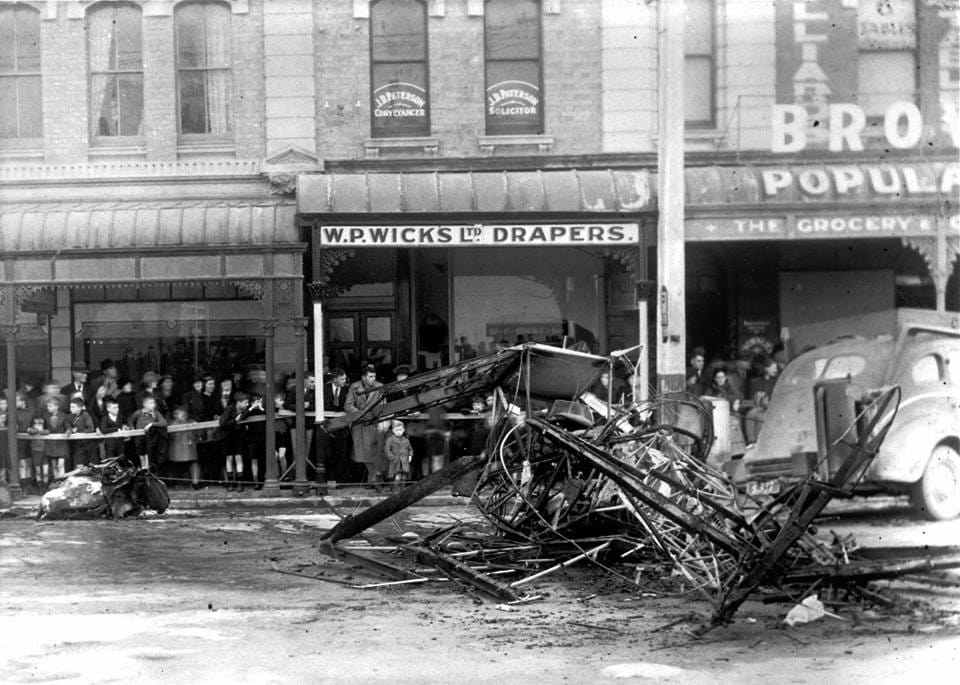WW2 reached Gore’s Main Street with tragic reality 75 years ago, on Thursday 11 June 1942?
The local Emergency Precautions Service (similar to todays Civil Defence) organized an evacuation exercise for the businesses and schools of the town. Censorship was in place and only the facts were reported in the paper despite a reporter being an eyewitness. 1 At 9.45am an alarm was sounded in the form of a series of 10-second siren blasts with five-second intervals. This was the signal for everyone to evacuate shops and offices to either the Fairfield reserves or to the banks of the Mataura River. The schools had dug trenches in their paddocks as part of the exercise. Everything went to plan and the evacuation was smooth, with one exception. Three planes from Taieri had been scheduled to bring some realism to the exercise but they hadn’t shown up. At 10.30am the all clear was given and people began to return to their shops, offices and schools. At 10.40am a plane was heard. The Tiger Moth DH82 flew in from the east, turned south over the Main Street and dove steeply unaware of steel cables that formed the town lighting system. He came down between the BNZ and H&J Smith’s but as he turned up he struck the cable crossing at H&J Smith’s. “The cable snapped with a ‘twang’ as the plane struck it, and it was the recoil from this which caused the most civilian casualties”2. The plane skidded along the street crashing into a car and lorry at the Mersey Street intersection. Pilot-Officer Geoffrey Coldham of Auckland was rescued from the plane by Constable Ted Fibbes but his injuries were such that he died before reaching the town’s hospital. June McKenzie, Frank Shave and Les Anderson, standing near H&J Smith’s were struck by the wire resulting in scalp wounds and concussions. Ronald Hill, standing further down the Main Street was hit by the wing tip and suffered a broken leg. Both of those in the vehicles escaped injury but were severely shaken.

